Sarangapani Temple, an ancient temple dedicated to Lord Vishnu, is located in the town of Kumbakonam in the South-Indian state of Tamil Nadu. This temple also gains special mention as one of 108 Divya Desams or the temples that are special to God Vishnu. The Sri Sarangapanai temple has a significant presence in the Nalayira Divya Prabandham sung by the 12 Alwar poets.
The beautiful temple is located on the banks of River Kaveri and is frequented by devotees of Lord Vishnu from all over the world. Along with being a sacred place of worship, the temple is a work of art in itself, with several carved and colorfully decorated mythological sculptures and images. The grandeur of the temple is breathtaking.
As one explores the Sarangapani Temple, they are bound to feel a certain vibe as hundreds of devotees transmit energies through their prayers and the experience is surreal.
Being one of the oldest temples in Tamil Nadu, it has architectural influences of three major dynasties of South India, namely Medieval Cholas, Vijayanagar Kingdom and Madurai Nayaks. Hence, it has an excellent blend of architectural styles which is amazing to explore.
As per Hindu legend, the Vaishnava deity, Sarangapani, an incarnation of Hindu god Vishnu, appeared for a sage Hema Rishi, who performed penance in the bank of Potramarai tank. Once sage Bhrigu wanted to meet Vishnu at his residence, Ocean of Milk. The sage did not get the attention of Vishnu and in his anger, he kicked Vishnu on his chest.
Mahalakshmi, who resides in Vishnu’s chest got angered as Vishnu did not show his anger towards the sage. She left Vaikunta and reached the earth and took the form of Padmavathy. Vishnu followed her and got married to her. Padmavathy got her memories and was still angry with Vishnu.
To avoid her anger, Vishnu resided in the underground chamber in the temple as Pathala Srinivasa.
In the meanwhile, the sage Bhrigu sought his apology and requested Mahalakshmi to be born to him as Komalavalli in his next birth. The sage was born as Hemarishi and performed penance to attain Mahalakshmi as his daughter. Vishnu was pleased by the penance and he wished the sage to get Lakshmi as his daughter.
Lakshmi emerged from the Potramarai tank among thousand lotuses and was thus named Komalavalli (the one who emerged from lotus). Vishnu descended to earth as Aravamudhan in a chariot drawn by horses and elephants from his abode Vaikuntam.
He stayed in the nearby Someswaran Temple to convince Lakshmi to marry him and the couple eventually got married. The name Sarangapani (“one who has the bow in his hand”) derives from the Sanskrit word Sarangam meaning bow of Vishnu and pani meaning hand.
Lord Perumal’s reclining postures are different in different places. The one in the Kumbakonam Sarangapani temple is praised as Uddhana Sayana. Saint Thirmazhisai Azhwar in his Mangalasasanam hymn asked the Lord “Are you resting as your leg pain due to long walk in Rama avatar”. Perumal tried to get up to grace Azhwar. Azhwar asked Perumal to give the darshan in the half-waking up posture. He is not in a complete reclining posture here as such.
Kumbakonam is the birthplace of Mother Komalavalli. After the marriage Lord chose to stay here itself with His consort – that is in his mother-in-law’s house. In Tamil this called as Veettodu Mappillai. Hence, Mother is dominant in the temple. The first worship goes to Mother only.
As a philosophy, as Mother is first in all respects, to establish this rule, the way to Perumal shrine is also structured accordingly. The Go-Puja- puja to cow is performed at Komalavalli Thayar shrines. Pujas to the Lord are offered only then.
Five Vishnu Temples located on the banks of Kaveri River are considered as Pancharanga Kshetrams. The Sarangapani Temple in Kumbakonam is one of the Pancharanga Kshetrams. The other four temples are Srirangapatna Ranganathaswamy Temple (Adi Ranga) first in this group of temples, Srirangam Temple, Appalarangam in Tiruppernagar, Parimala Ranganatha Perumal Temple in Mayiladuthurai and Vatarangam (mentioned in some texts) as the fifth temple.
The most striking feature of the Sarangapani Temple is the main gateway or the rajagopuram. It is 173 feet tall with eleven tiers and is the tallest temple in Kumbakonam.
Each tier is adorned with figures depicting Indian mythology and legendary stories. The site has water bodies and shrines inside a walled compound only the Potramarai tank is located outside the entrance on the western side of the premises.
Sarangapani Temple is one of the five Vishnu temples associated with the Mahamaham Festival or the Kumbh Festival that is celebrated once in 12 years.
At the center is a shrine that has a chariot with elephants and horses. This shrine depicts the story when Lord Vishnu descended to earth. The central shrine of the temple houses the image of Sarangapani in pallikonda posture, with his head resting on his right hand. There are other images of sage Hemarishi, Lakshmi and festival images enshrined within the sanctum.
There are two stepped entrances to the sanctum named as Utharayana Vaasal and Dhakshanayana Vaasal, each open for a six-month period. From 15 January to 15 July, Utharayanya Vaasal is opened while Dhakshanaya Vaasal is opened during the other half of the year.
The temple has two processional chariots carved out of wood stationed outside the rajagopuram. It is classified as Karakkoil, a temple fashioned after temple chariots which are taken in procession around the temple during festivals.
The Potramarai tank has mandap called the Hemarishi Mandap. The temple walls have 108 karanas sculpted on them.
The temple follows Pancharatra Agama and Vadakalai tradition. The temple rituals are performed six times a day; Tiruvanandal at 8:00 a.m., Kala santhi at 9:00 a.m., Uchikalam at 12:30 p.m., Ntiyanusandhanam at 6:00 p.m., Irandamkalam at 7:30 p.m. and Ardha Jamam at 9:00 p.m.
Each ritual comprises three steps: alangaram (decoration), neivethanam (food offering) and deepa aradanai (waving of lamps) for both Sarangapani and Thayar. The food offering during the six times are curd rice, Ven pongal, spiced rice, dosa, Ven pongal and sugar pongal respectively.
The mercy of Lord Perumal Sarangapani towards His devotees is above the power of words. A devotee Lakshmi Narayanaswami served the Lord throughout his life. He is the one who built the Rajagopuram of the temple. But he was childless. He reached the Lotus feet of Lord in a Deepavali day. Any one having no heir to perform the last rites would go to hell, according to Sastras.
But the Lord cannot ignore His devotee. He performed the last rites for His devotee. Next day, when the temple was opened, people saw Him with a wet dhoti and His sacred thread (Yagnopavitha) changed on the right shoulder, darba in hands in rite-performing manner. This event is followed in the temple on Deepavali days during the midday puja but devotees are not allowed to see this puja.
The majority of the Divyadesa temples have Sorgavasal open on the Vaikunta Ekadasi day occurring in December-January. But there is no one such in this temple as Perumal came to this Divyadesa directly from His Vaikunta Divyadesa. The very worship of Perumal Lord Sarangapani would take devotees to salvation.
The temple celebrates various festivals throughout the year. Akshaya Tritiyai – 12 Garuda Sevai Chaitra Brahma Utsavam celebrated during the Tamil month of Chittirai (April – May).
Vasantotsavam during Vaikasi (May – June), Pavitrotsavam – Ekadasi Jyeshotsavam during Adi (July – August), Deepavali – Shraddha of Sri Lakshmi Narayanaswami during Aippasi (October – November).
The twin temple chariots weigh 300 tons each and has been renovated in 2007.
The chariots are pulled by hundreds of devotees across the streets around the temple twice a year, once during the Brahmmotsavam during April–May and another during Ratasaptami in January–February.


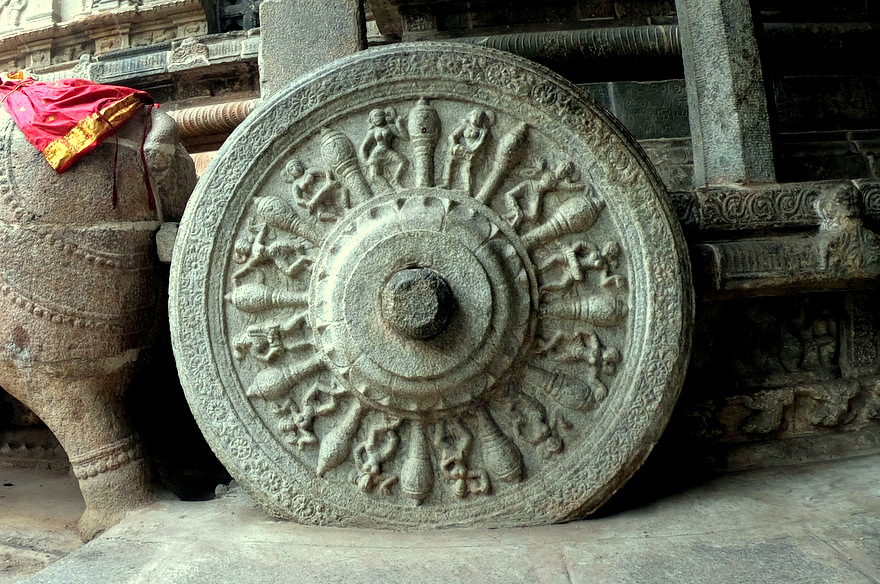
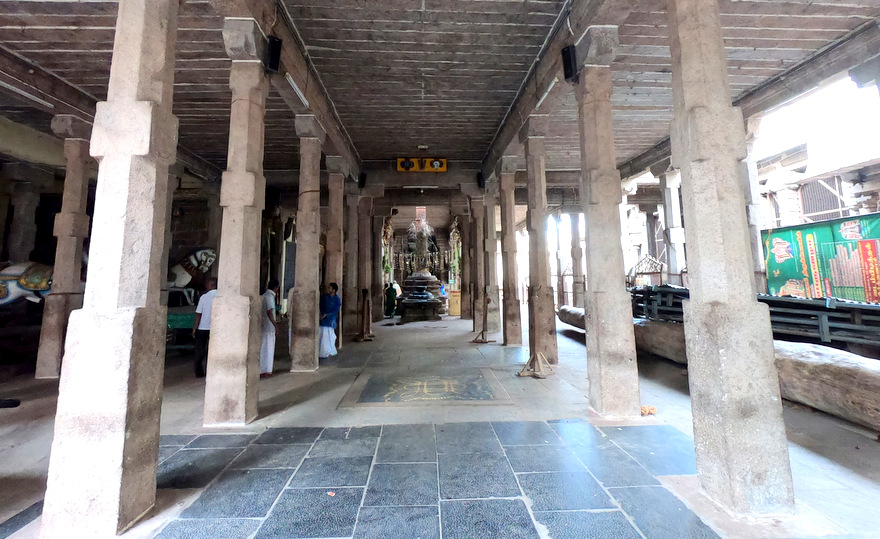
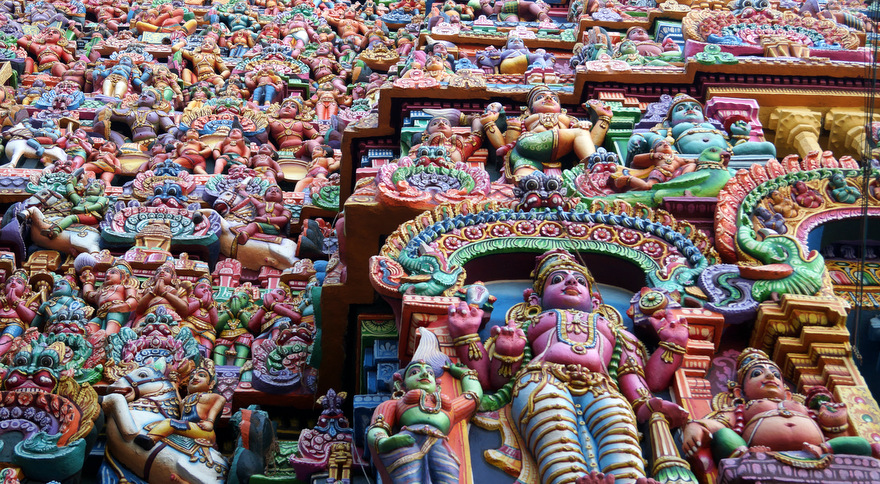
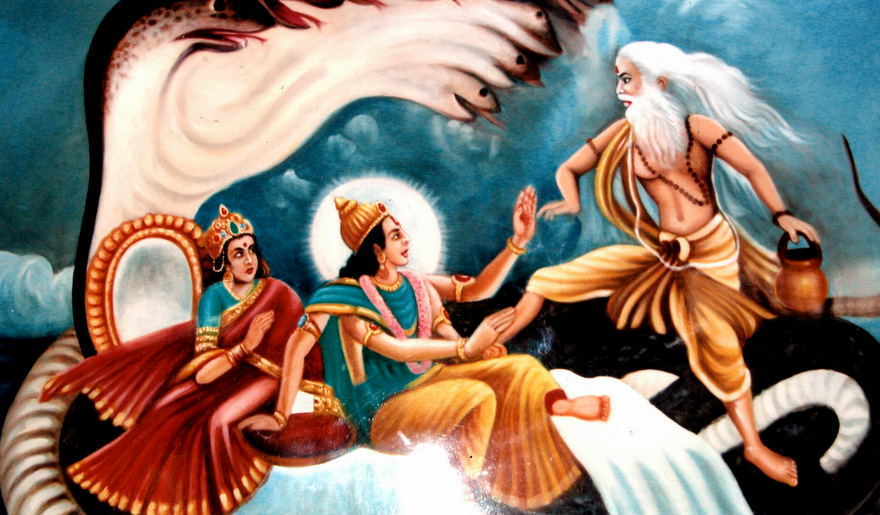
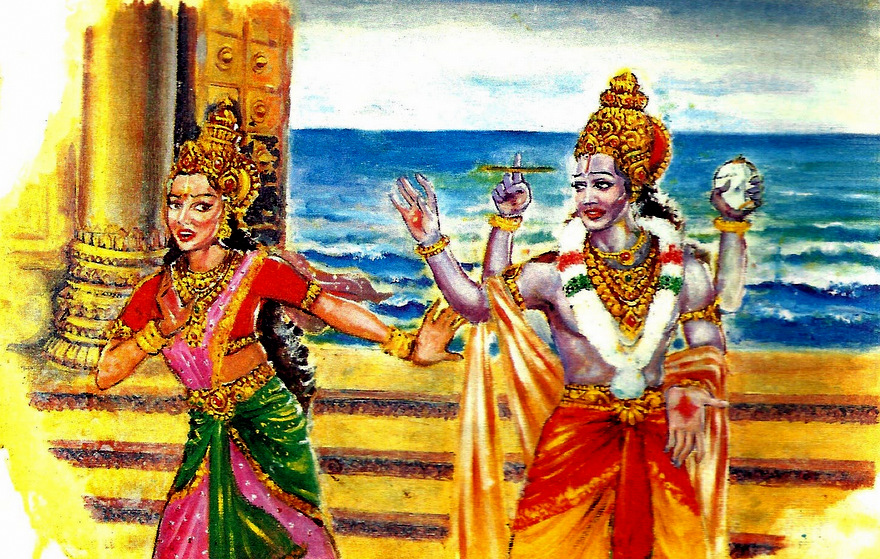
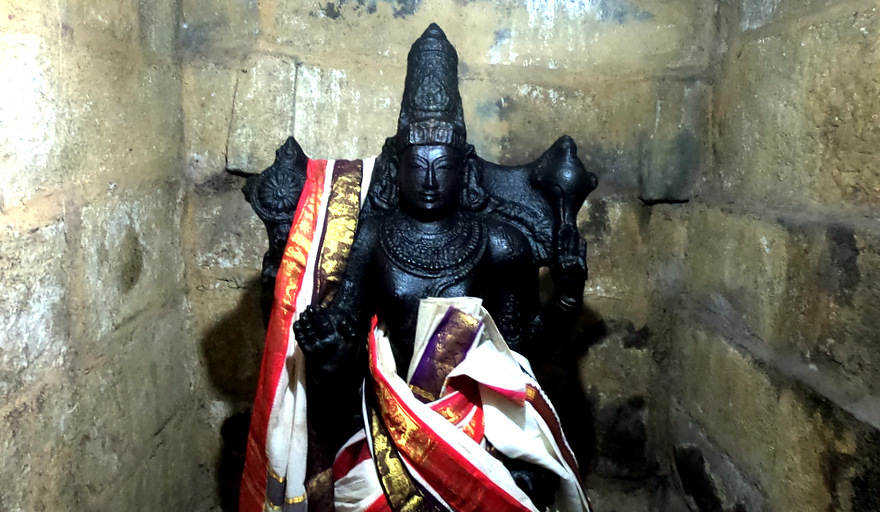
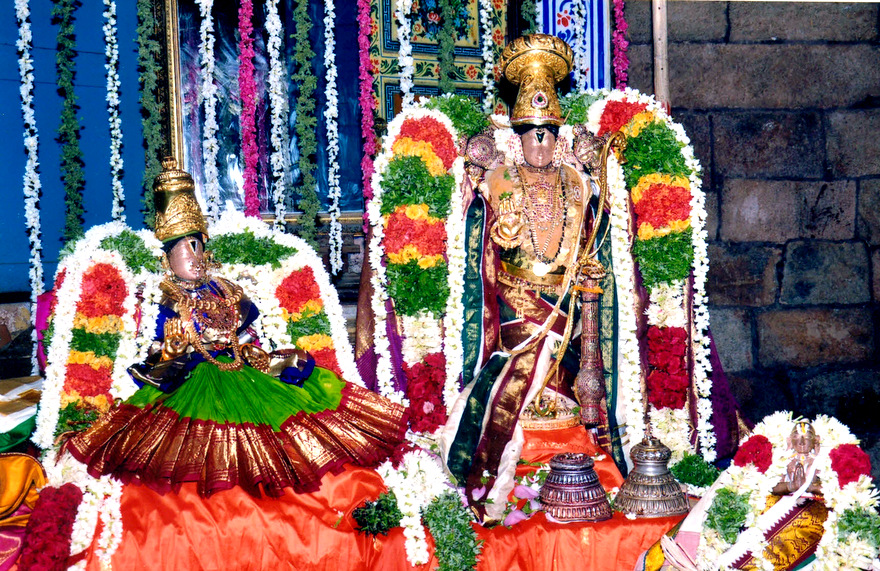
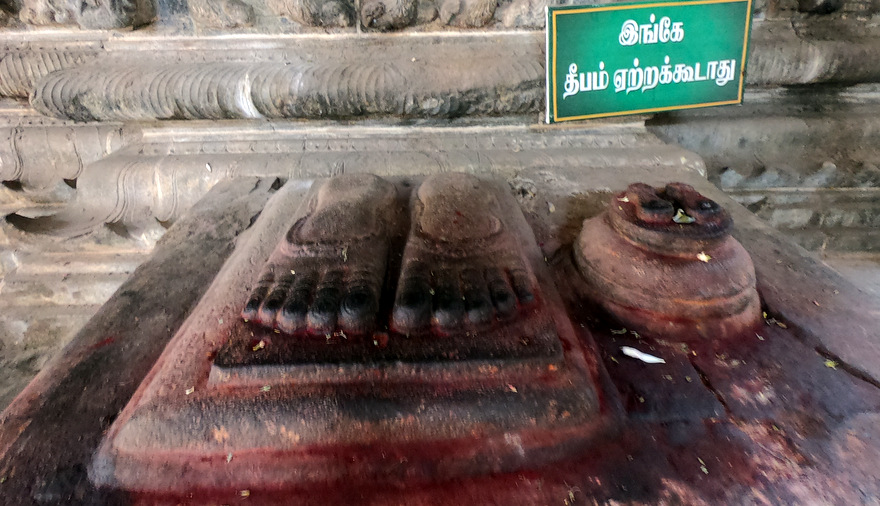

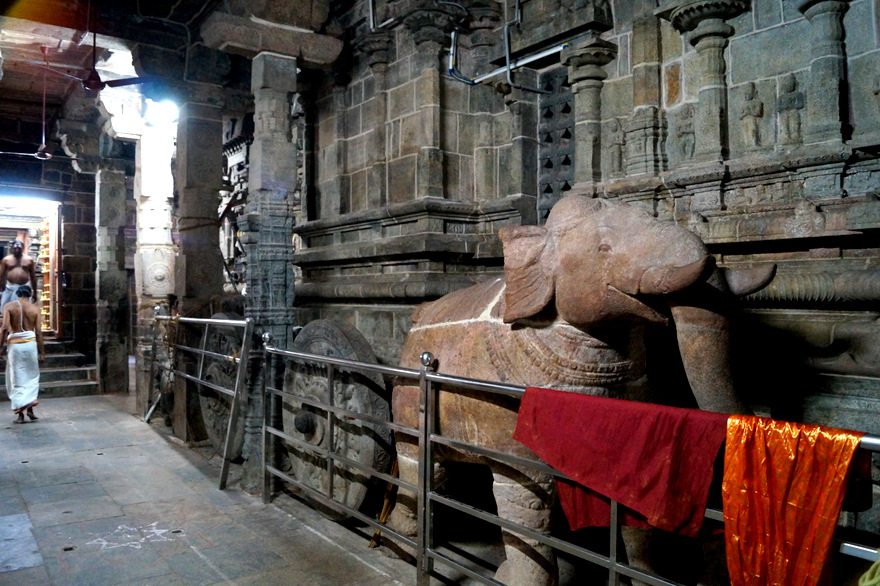
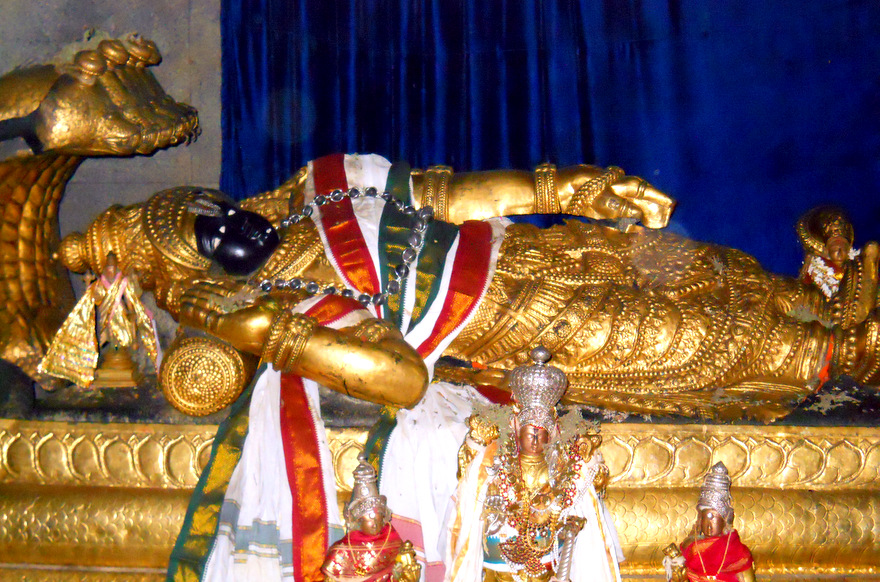
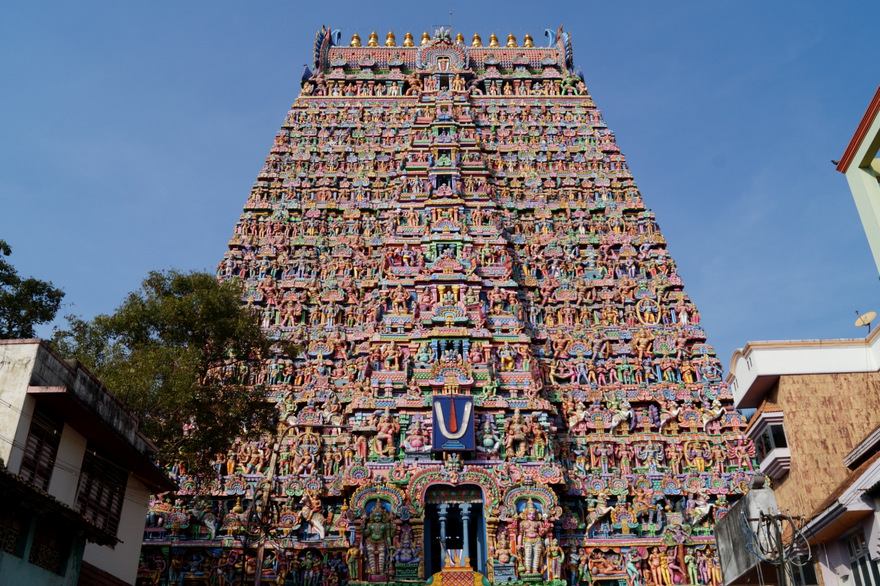

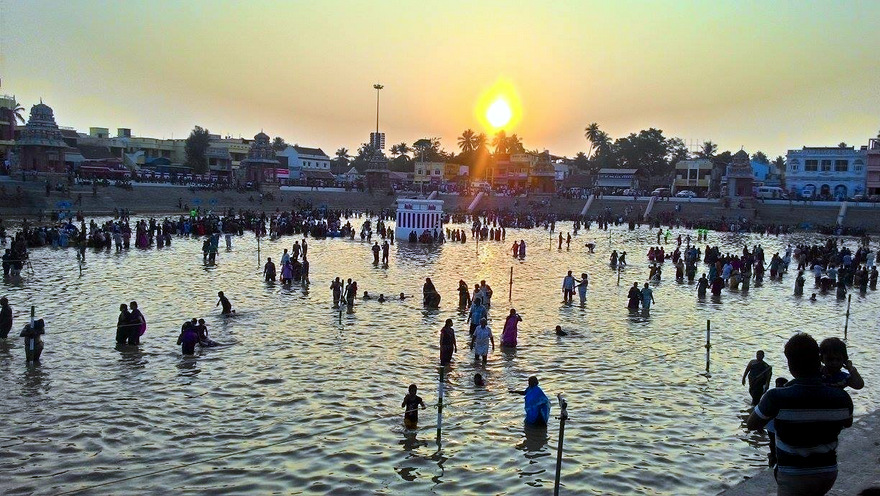
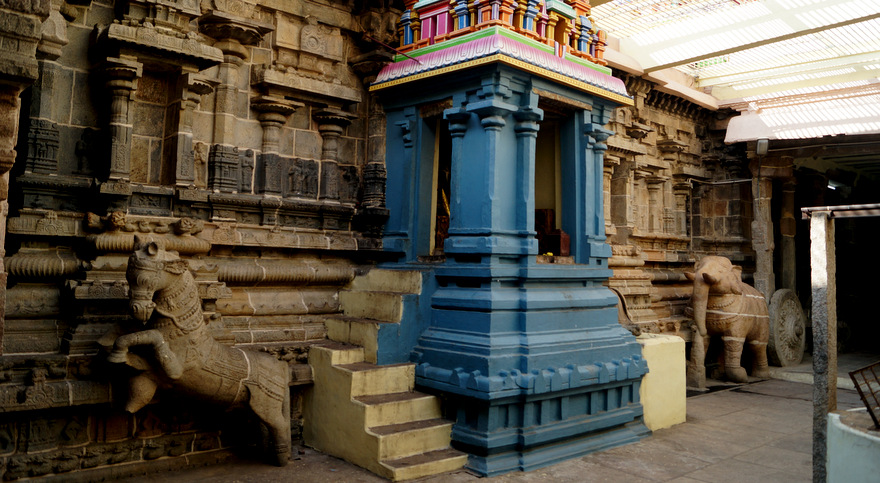
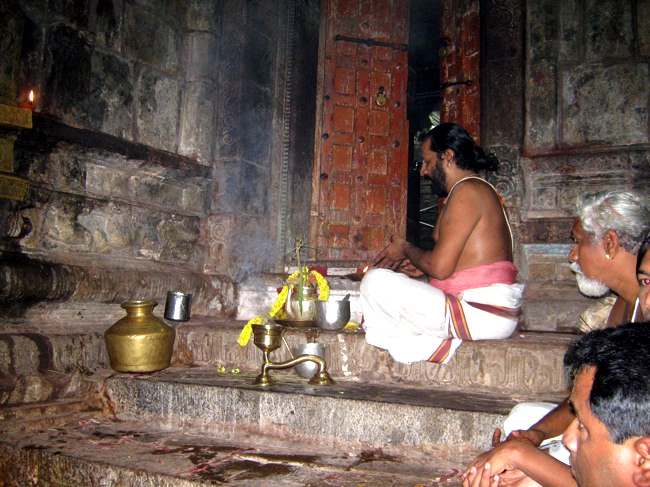
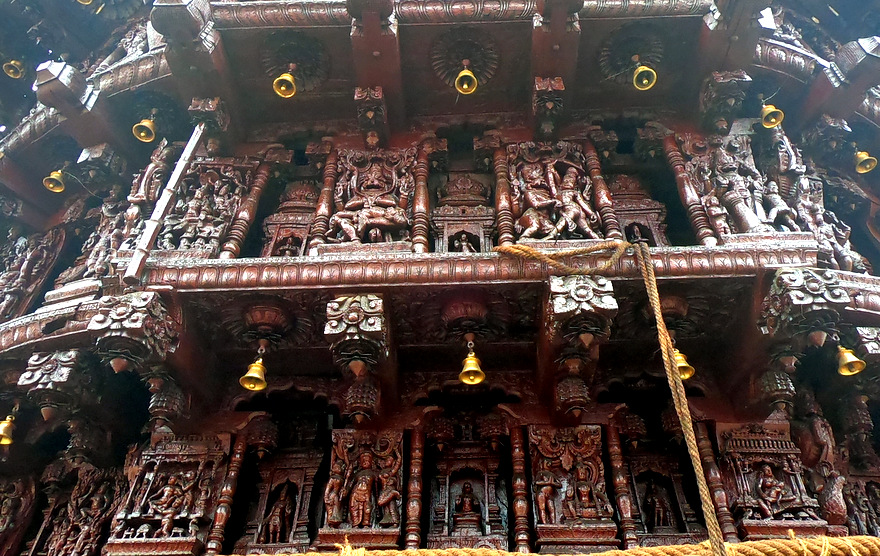
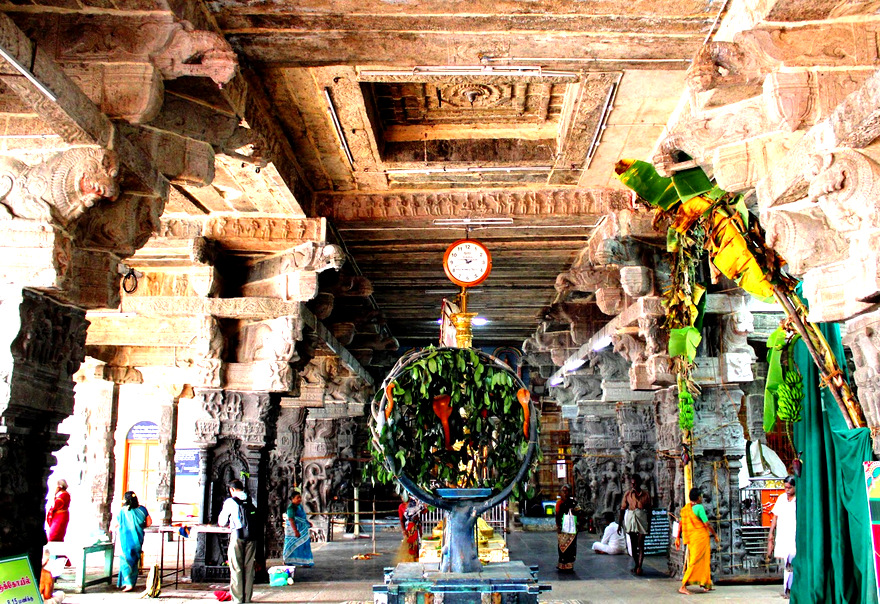

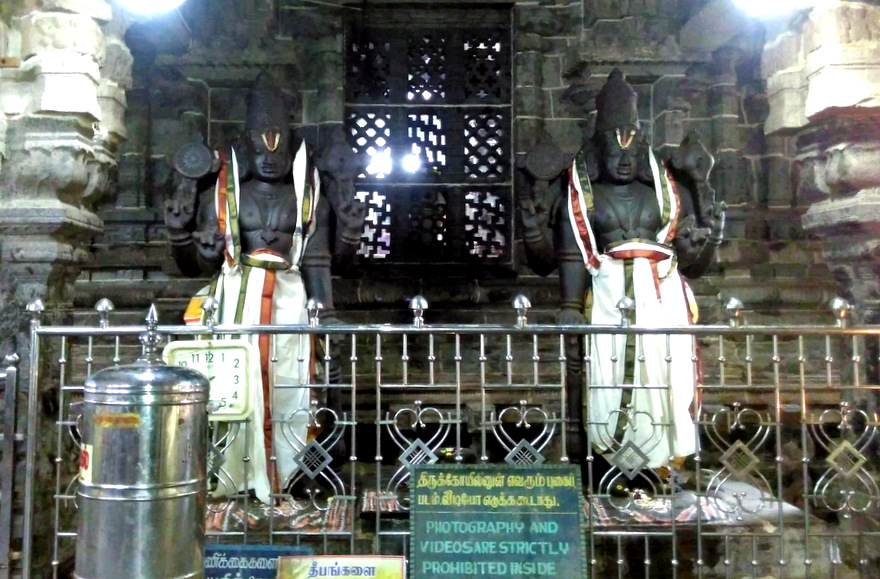
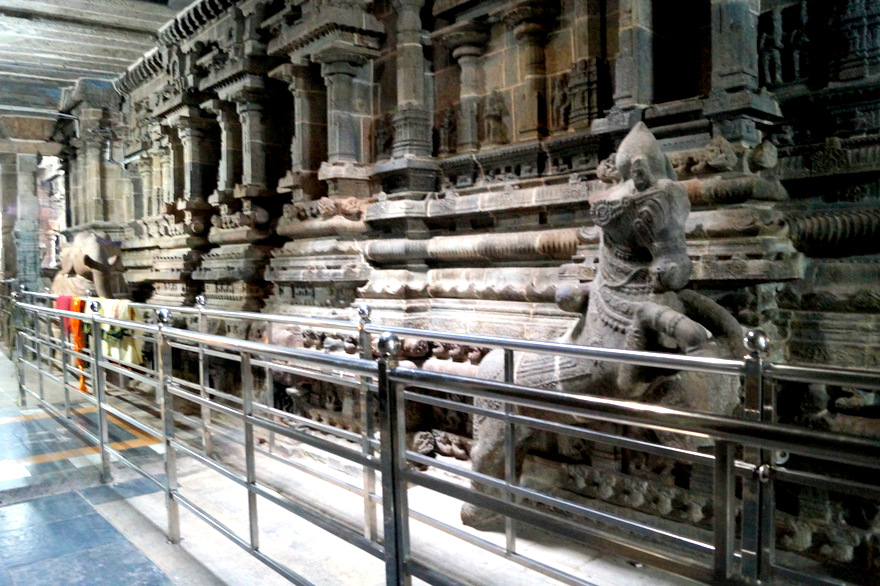
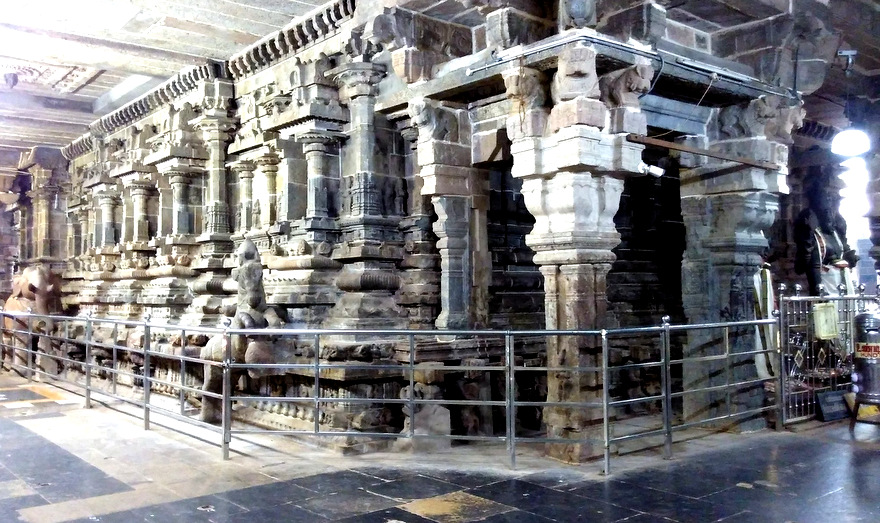
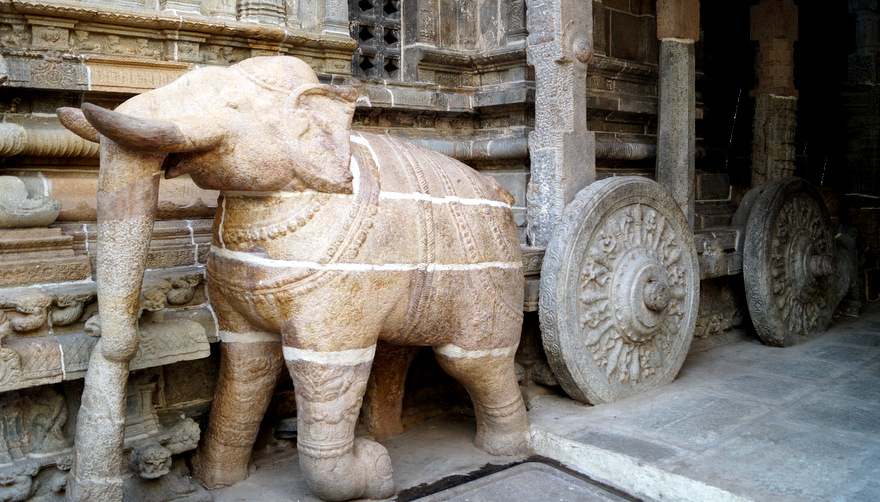
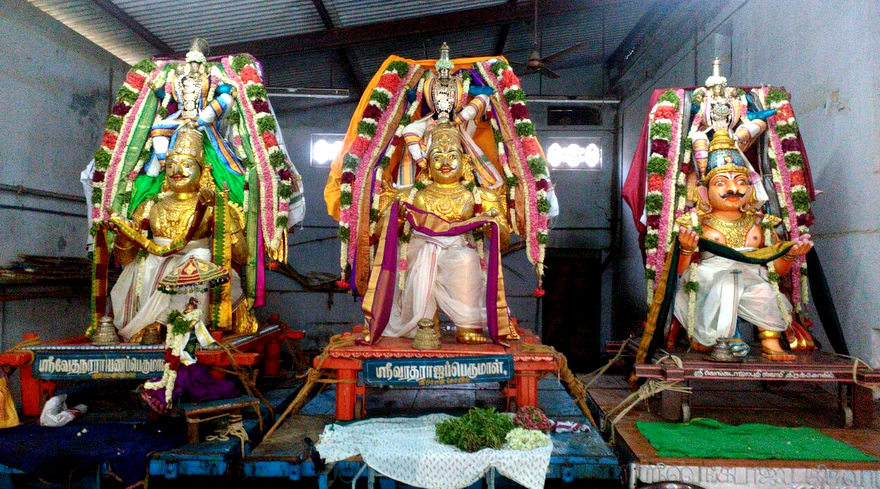
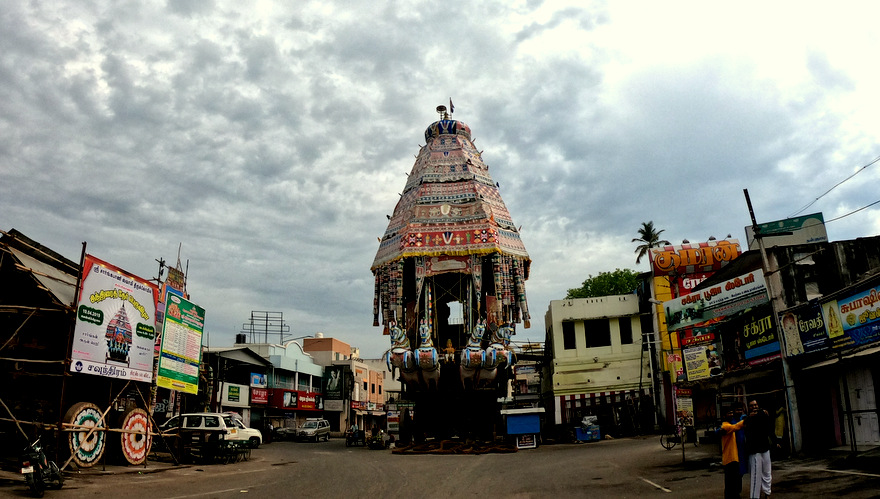
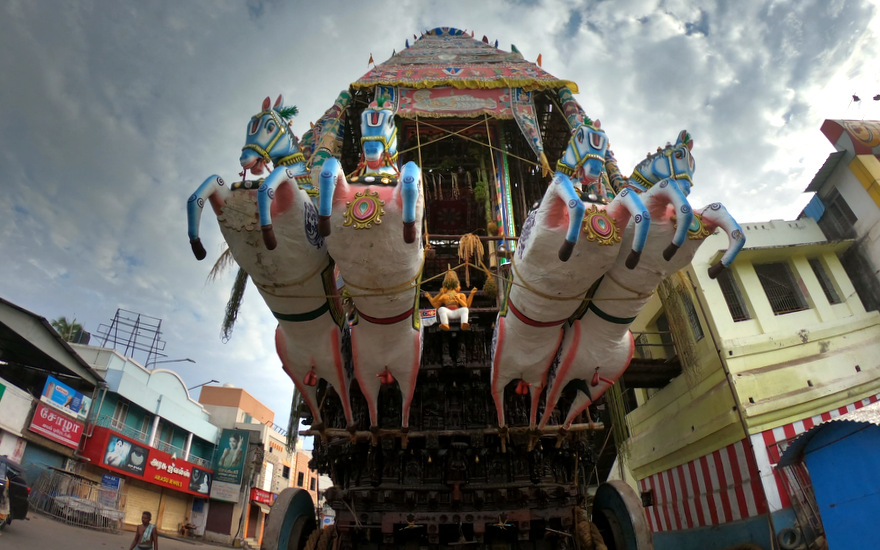
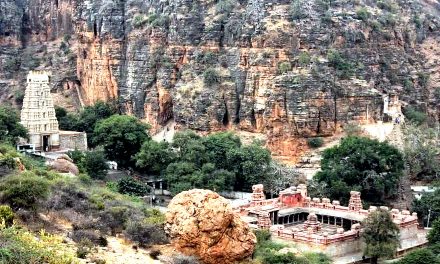

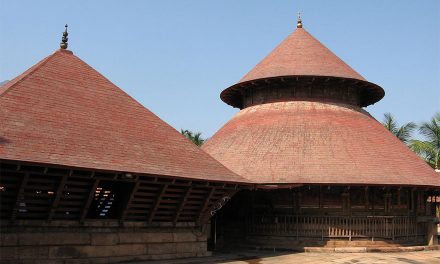









Awesome content! I read it completely. Presentation of your content is awesome with useful Information. Thanks for posting
Superb presentation.
It that SAARNGA pani (Saarngam is a bird and Lord Vishnu holding it) or SARANGA pani (a bow that lord holds)?
I had lived in KMU as a child in early 1950s and i was told that saarnga is a bird. A rishi who died without “puthra” had to be born as a bird and get a “puthra” and then got liberated.
WOULD LIKE TO KNOW MORE ON THIS
Very informative
very interesting am not a Hindu so do not understand it. Can there be an explanation
of Hinduism please
Amazing to watch the Temple and history of Komlavalli Thayar and Sri Sarangapani. Om Namo Narayana. Feeling blessed.
very good article, contains all information about the temple. thanks
Very impressive narration and highly informative Kumbakonam is a city of shrines and I had the privilage of coming to the town, worshipped in Lord Sarangapani temple Chakrathazhwar temiple.
bEING A SMARTHA (VADAMA IYER) I could not miss KUMBESWARAR TEMPLE ALSO.
Very useful and illustrative. Regards
Spectacular. It is one of the 108 divyadesams and born as a Sri vaishnava, one should visit this temple. The article is covering all aspects of the temple and the story of Perumal and Thayar with illustrations.
Very useful information for the devotees
Very much useful and informative and useful for every devotee
eager to have darshan of sri saranga pani swami
Beautifully presented. Good information. Keep up the good work.
very nice hope to be there one day thanks
Very beautifully presented and beautiful pictures too..will try and take a trip to this temple…very informative…thanks
very informative. Thanks,
Another well-written article by this author. However, an important aspect of this temple has been left out.
One of the holy names of the Lord here is “Draavida Sruthi Darshaka”.
The lord here helped us get back the 4000 tamil hymns, collectively known as “Divya Prabhandam”. The original hymns sung by the 12 Aazhwaars were lost over the years. Sri Naathamuni, a great devotee happened to hear 10 verses from Nammaazhwaar’s Thiruvaimozhi, part of the original 1000 in the collection. These were about the lord in Thirukkudanthai, the tamil name of Kumbakonam.
The last verse of the set of 10 referred to the collection of 1000. People who recited the 10 did not know the rest.
Mesmerised by the pure devotion and beauty of the hymns, Naathamuni went on a pilgrimage to collect the rest. Swami Nammazhwar blessed him not just with 1000, but the other 3000 that were sung by other Aazhwars.
Thus, the lord here indirectly helped Naathamuni to recover the holy Prabhandams, which are called Draavida Vedas, as they contain the essence of the sanskrit vedic texts. For this reason, the lord has this beautiful holy name: Draavida Sruthi Darshaka (Sruthi means Vedas and Darshaka means one who shows the path).